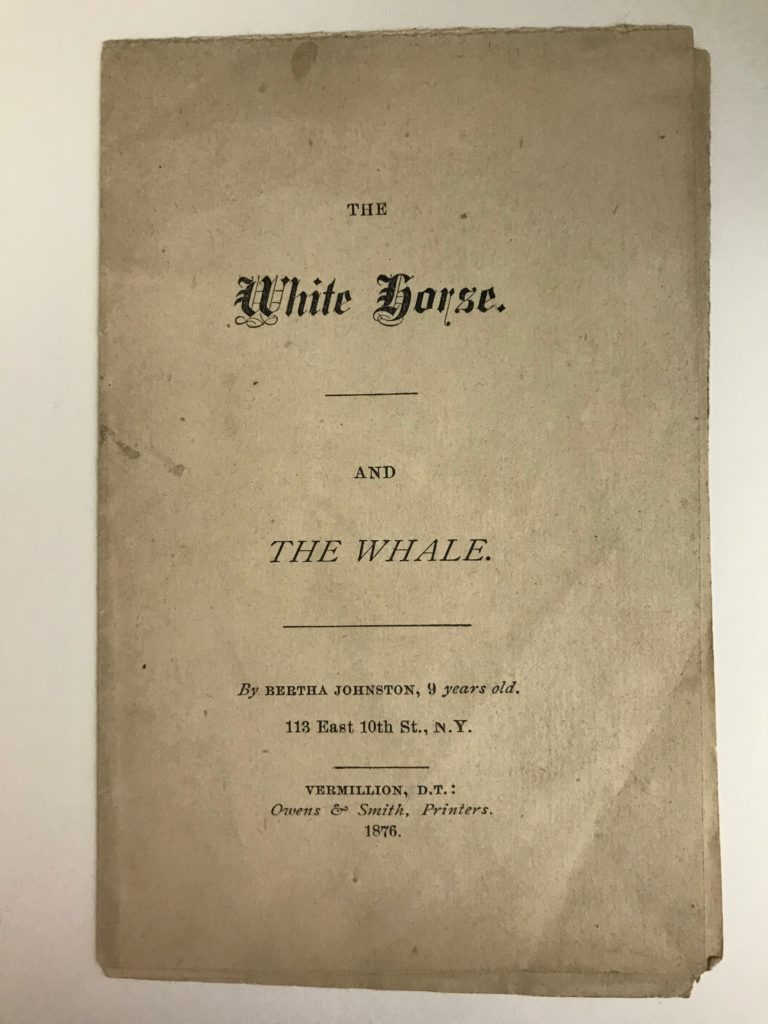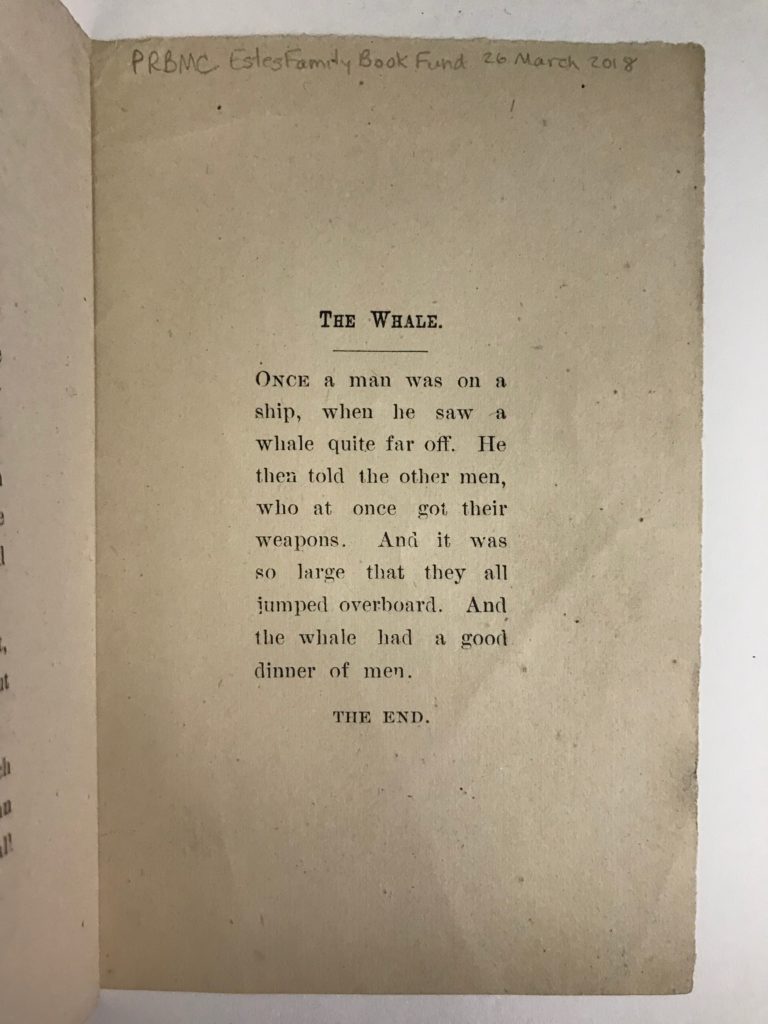 I recently purchased from booksellers David Szewczyk and Cynthia Davis Buffington a copy of what might very well be the first children’s book printed in Vermillion, Dakota Territory (now South Dakota). This 1876 piece of juvenilia is titled The White Horse and written by one Bertha Johnston, who is described on the title page as nine years old and living across the country at 113 East 10th Street, New York. How her work caught the attention of the publisher Owens & Smith is not clear. Perhaps she sent her work out to various newspaper and periodical publishers for possible publication, and since Owens & Smith published the local paper in Vermillion it may be that her piece was initially published in an eastern paper and the Vermillion publisher decided to reissue it in chapbook format as a novelty. The White Horse is a short story about a poor man of great Christian faith who has a beautiful white horse that captivates the interest of his wealthy neighbor who is not a believer. Although the poor man refuses to sell the horse, the two men become friends and their shared love for the horse eventually brings the wealthy man to believe in God.
I recently purchased from booksellers David Szewczyk and Cynthia Davis Buffington a copy of what might very well be the first children’s book printed in Vermillion, Dakota Territory (now South Dakota). This 1876 piece of juvenilia is titled The White Horse and written by one Bertha Johnston, who is described on the title page as nine years old and living across the country at 113 East 10th Street, New York. How her work caught the attention of the publisher Owens & Smith is not clear. Perhaps she sent her work out to various newspaper and periodical publishers for possible publication, and since Owens & Smith published the local paper in Vermillion it may be that her piece was initially published in an eastern paper and the Vermillion publisher decided to reissue it in chapbook format as a novelty. The White Horse is a short story about a poor man of great Christian faith who has a beautiful white horse that captivates the interest of his wealthy neighbor who is not a believer. Although the poor man refuses to sell the horse, the two men become friends and their shared love for the horse eventually brings the wealthy man to believe in God.
 The second story in the collection, “The Whale,” does not end quite so happily. Here it is, in its breathless entirety:
The second story in the collection, “The Whale,” does not end quite so happily. Here it is, in its breathless entirety:
The Whale. Once a man was on a ship, when he saw a whale quite far off. He then told the other men, who at once got their weapons. And it was so large that they all jumped overboard. And the whale had a good dinner of men. The End.
In an era when didactic children’s stories played out in long-winded prose, the brevity of the “The Whale” is stunning, and it is the whale that emerges the victor. One wonders whether she was familiar with that most famous of whales, Moby Dick.
And what about the author, Bertha Johnston? Using the genealogical database Ancestry, I found a likely match in one Bertha Johnston who was born circa 1868 in New York, the daughter of Alma Ann Calder and John Henry Johnston. The 1910 United States Census lists the same Bertha Johnston, aged forty-two, living in Brooklyn and employed as a magazine editor. The 1940 census reveals that Bertha had attended college for two years. This humble chapbook represents the genesis of what ultimately became a career in the burgeoning field of periodical publishing, with its new opportunities for the growing ranks of formally educated American women.
